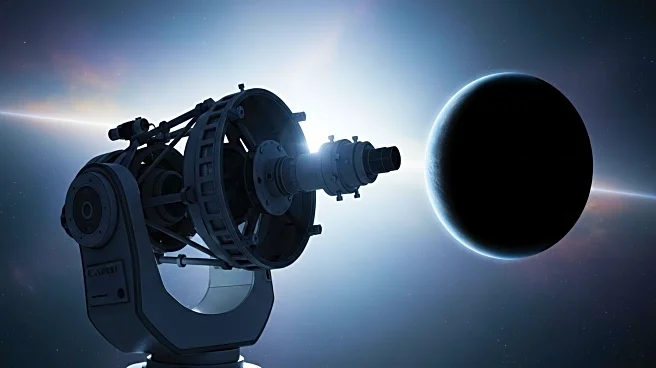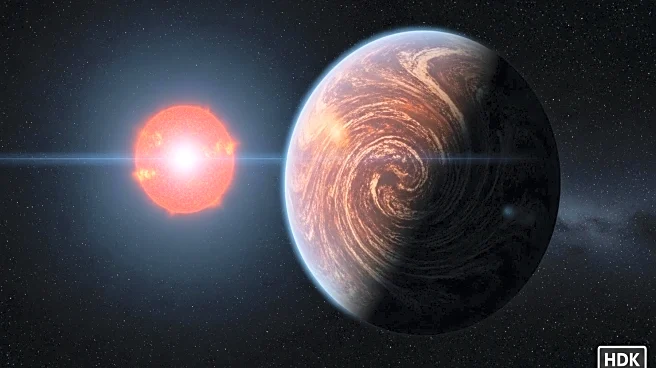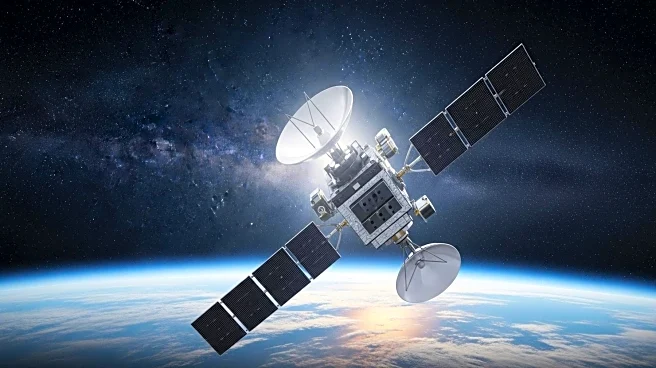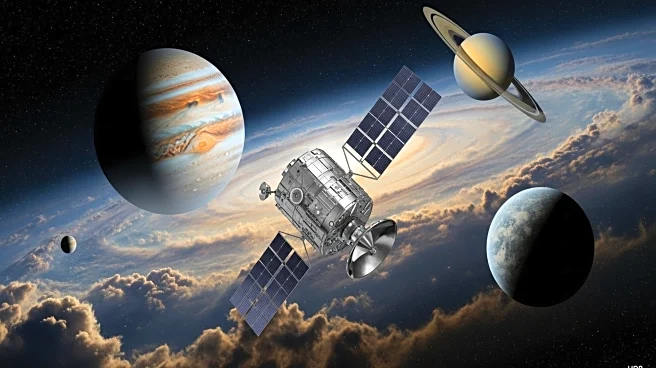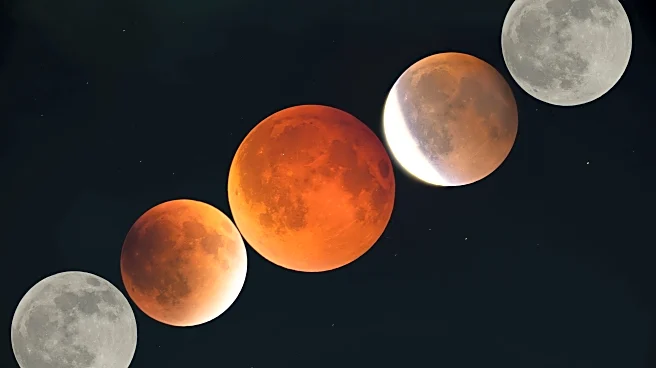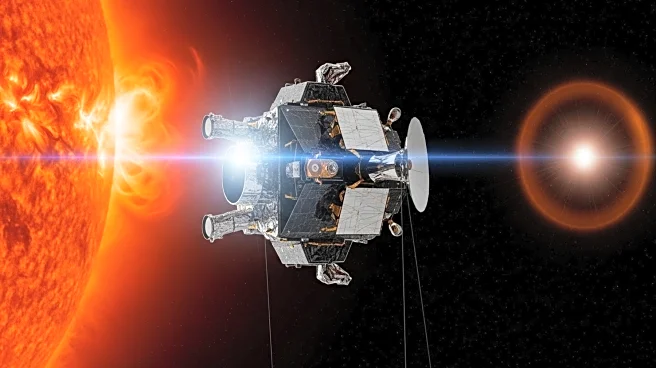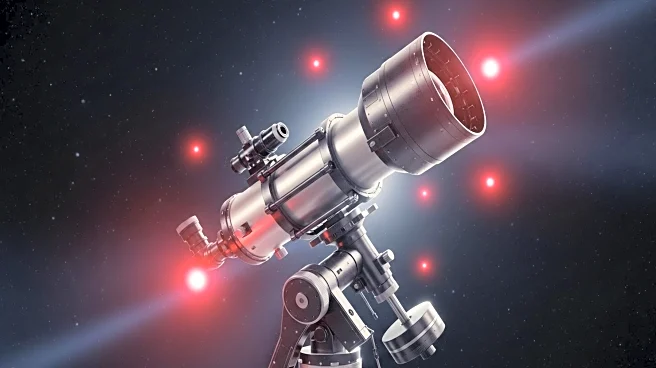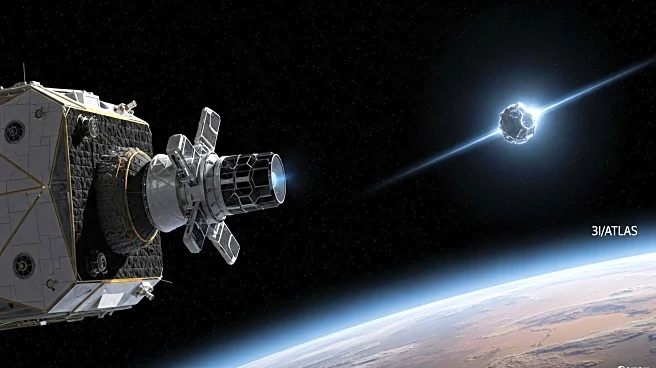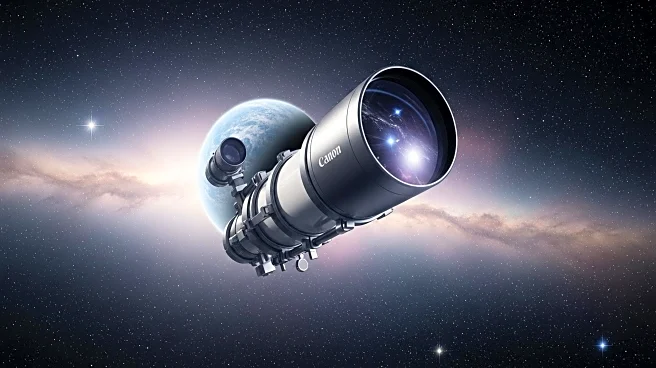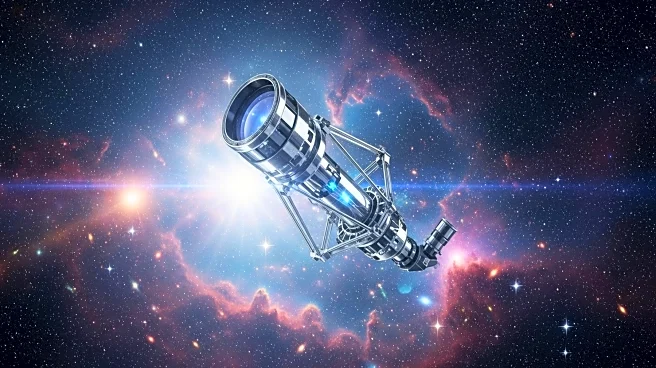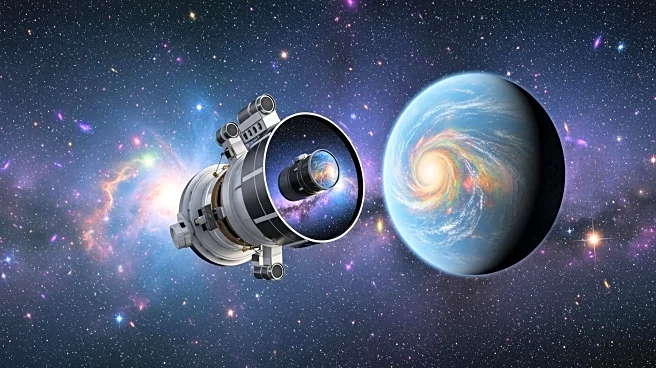What is the story about?
What's Happening?
The James Webb Space Telescope (JWST) has turned its focus to TRAPPIST-1 e, a rocky exoplanet located in the habitable zone of its star, TRAPPIST-1. Recent observations suggest that TRAPPIST-1 e may have lost its primordial atmosphere due to stellar flaring from its red dwarf star. However, the data also leaves open the possibility of a secondary atmosphere, similar to Earth's, which could support liquid water. The JWST's infrared capabilities allow it to detect atmospheric constituents such as water vapor, carbon dioxide, methane, and ammonia, which are crucial for understanding the planet's potential to support life. The findings are detailed in two papers published in The Astrophysical Journal Letters, based on the first four transits observed by the telescope.
Why It's Important?
The study of TRAPPIST-1 e is significant as it represents one of the few opportunities to analyze a rocky exoplanet within a habitable zone, potentially offering insights into the conditions necessary for life. The JWST's ability to characterize exoplanetary atmospheres marks a new era in astronomy, moving beyond mere discovery to detailed analysis. Understanding the atmospheric composition of TRAPPIST-1 e could provide clues about the formation and evolution of planetary systems, and the potential for life beyond Earth. The research also challenges existing observational and theoretical models, given the unique characteristics of the TRAPPIST-1 system compared to our solar system.
What's Next?
Future observations of TRAPPIST-1 e are planned, with 15 additional transits scheduled. These will employ a new technique developed by researchers to better isolate the planet's atmospheric signals from stellar contamination. By comparing spectra from TRAPPIST-1 e with those from its neighboring planet, TRAPPIST-1 b, scientists aim to refine their understanding of the exoplanet's atmosphere. This ongoing research will continue to leverage the JWST's advanced capabilities, potentially leading to groundbreaking discoveries about the conditions necessary for life on other planets.
Beyond the Headlines
The exploration of TRAPPIST-1 e's atmosphere not only advances scientific knowledge but also raises ethical and philosophical questions about humanity's place in the universe. The potential discovery of life-supporting conditions on another planet could have profound implications for our understanding of life itself and the uniqueness of Earth. Additionally, the research underscores the importance of international collaboration in space exploration, as the JWST is a joint effort by NASA, ESA, and CSA.
AI Generated Content
Do you find this article useful?
